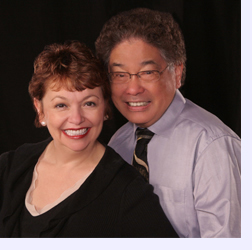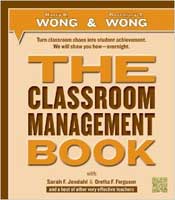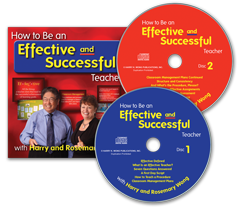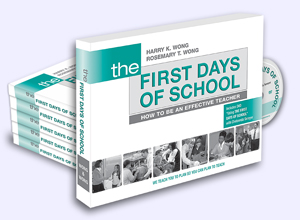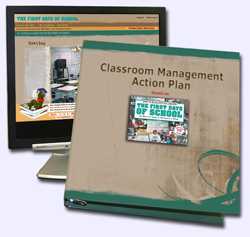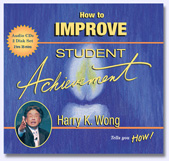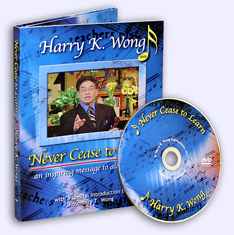
Be Proud of Public Education

Knowing this, then, why is there a problem?
The problem with the American educational system is that there is no system to the system. The American educational system is a hodgepodge, mishmash, and jumble of programs, initiatives, and fads all piled on top of each other created by each succeeding elected official, disarticulated college programs and ideologies, new school administrator, and private companies—most of whom are clueless to “effectiveness,” the single most significant factor that leads to student learning and achievement.
Years ago, we defined effectiveness and it has been the cornerstone of our work. The examples we’ve shared through the years on Teachers.Net showcase effectiveness on many levels. Recently we wrote a report on effectiveness, learning, and achievement called “Developing and Retaining Effective Teachers and Principals.” Click here to download it for free.
We agree with Marc Tucker of Harvard who describes our educational system. “The United States has no coherent, overall educational system. Rather, it constantly makes program and structural changes with no focus on student learning.”
 The education legacy we are leaving for our future generations resembles a sanitary landfill with layer upon layer of discarded garbage, compacted and bracing for the next discarded layer. We are a system of discards, failed programs, and fads. The education legacy we are leaving for our future generations resembles a sanitary landfill with layer upon layer of discarded garbage, compacted and bracing for the next discarded layer. We are a system of discards, failed programs, and fads.
Brad Johnson wrote “Politics of Education” in the March 2012 Teachers.Net Gazette and said that currently, there are 129 teacher and job training programs in the U.S. Department of Education costing taxpayers $22 billion, of which more than 40 are duplicative, contradictory, and unnecessary for K–12 education. Spending this amount of money, one would expect results—but can you name any of these 129 teacher and job training programs? A trip to the landfill holds clues for the answers.
There is no organization, direction, or focus to the American educational system. It is run by bureaucrats, lobbyists, large corporations, and agenda-minded activist groups. Want to know why the educational system works in Finland, Singapore, and Japan; it is because their system is run by educators who are laser focused on student learning. They know that
Programs do not teach students. Teachers teach students.
We Provide More Schooling Than Any Other Country
Education for all is one of the defining promises of our American democracy. By 2015, 118 million children in the world will still not be able to attend a school and over 200 million teenagers will have no opportunity to attend secondary school. That’s a total of over 300 million youth not being educated. Yet, in America, schooling is provided for more people for longer periods of time than any other country.
America is the world’s super power because of what its people know and can do. The country has succeeded not in spite of education, but because of it.
The Problem in our schools is not the teachers.
The Success of our schools is because of our teachers.
What Educators Have Accomplished
The bottom line is test scores are improving; achievement gaps are narrowing; graduation rates are ever increasing; trust and confidence are on the upswing, more students are going to college; and schools are wired for success—to name just a few of the successes all educators have worked hard to achieve.
1. Americans Are Becoming More Educated
In 1945, the percentage of adults age 25 and older who had completed high school was 24 percent and in 2010 it was 93 percent. In the same time period, the proportion of adults who had attained at least a Bachelor’s degree increased from 4 percent to 27 percent. (“The Condition of Education 2012,” IES National Center for Education Statistics, May 2012, p. 11)
2. High School Students Are Taking a More Challenging Curriculum
The percentage of high school graduates completing a core academic curriculum—including four years of English and three years each of mathematics, science, and social studies—quadrupled between 1982 and 2000, from 14 percent to 57 percent. The number of graduates completing a rigorous curriculum of four years English and math, and three years each of social studies, a foreign language, and science almost tripled from 5 percent in 1990 to 13 percent in 2009. (“America’s High School Graduates,” IES National Center for Education Statistics, NCES 2011-462, p. 8)
3. More High School Students Are Completing Advanced Math and Science Courses
The percentage of high school graduates completing algebra II in 2009 increased to 76% from 53% in ten years. Students earning credit in precalculus/analysis in the same ten years nearly doubled to 35% from 14%. From 1990 to 2009, the percentage of students earning credit in advanced sciences increased in chemistry (45% to 70%), biology (28% to 45%) and physics (24% to 39%). (Science and Engineering Indicators 2012, http://www.nsf.gov/statistics/seind12/c1/c1h.htm)
4. More High School Students Are Taking AP Courses and Exams
Between school years 1983–84 and 2003–04, the number of students taking AP exams rose from 177,000 to more than 1.1 million and the number of AP exams taken grew from almost 240,000 to over 1.8 million in 2009–2010. (“America’s Youth: Transitions to Adulthood,” IES National Center for Education Statistics, NCES 2012-026, p. vi)
5. More Students with Disabilities Are Being Educated in Regular Classrooms
Between school years 1985–86 and 2003–04, the percentage of students with disabilities educated in regular classrooms for most of the school day with non-disabled students grew from 26 percent to 50 percent. By 2008, 58 percent of students with disabilities were so well-integrated in normal classrooms, that they spent less than 21 percent of their school time away from general class learning. (Fast Facts, “Students with disabilities, inclusion of,” IES National Center for Educational Statistics, http://nces.ed.gov/fastfacts/display.asp?id=59)
6. Student Achievement Has Gone Up in Math
For grades 4 and 8, average math scores in 2011 were higher than the average scores for all previous assessment years. Gains have been particularly dramatic for 9-year-olds. The average scores jumped from 213 in 1990 to 241 in 2011. Nine-year-old African Americans raised their scores by 36 points, from 188 in 1990 to 224 in 2011. For 13-year-olds, average scores rose from 263 in 1990 to 284 in 2011. (“Mathematics Performance (Indicator 24-2012),” The Condition of Education, IES National Center for Educational Statistics, http://nces.ed.gov/programs/coe/indicator_mat.asp, and Table A-24-2, NAEP, selected years, 1990–2011 Mathematics Assessments)
7. Younger Students Are Showing Gains in Reading Achievement
According to the long-term trend data of the NAEP, reading achievement for 9-year-olds reached the highest score, 221, since NAEP began testing reading in 1971, and most gains have occurred since 1999. More notable, the average grade 8 score was one point higher in 2011 than 2009. (“The Condition of Education 2012,” IES National Center for Education Statistics, May 2012, p. 2)
8. In Other Academic Subjects, Achievement Has Improved or Stayed the Same
From 1994 to 2010, NAEP scores have gone up for students in grade 4, U.S. history (from 206 to 213), geography (from 205 to 214), and Civics (150 in 1998, the first year of measurement, to 157). (“The Condition of Education 2012,” IES National Center for Education Statistics, May 2012, p. 66)
9. Some Achievement Gaps Are Narrowing
NAEP test score gaps in math and reading between Caucasian and minority students have tapered to the smallest margins in three decades. Data from the regular NAEP assessment in reading also shows a reduction in the gap between Caucasians and African Americans in average scale scores at grade 4, from 44 points in 1971 to 24 points in 2008. For 17-year-olds, the gap has decreased from 54 points in 1971 to 29 points in 2008. In recent years, all racial groups have seen moderate gains. (“The Condition of Education 2012,” IES National Center for Education Statistics, Table A-13-1, http://nces.ed.gov/programs/coe/tables/table-lng-1.asp)
10. SAT Scores Have Gone Up, Even as Many More and Racially Diverse Students Are Taking the Test
Scores on the SAT college entrance exam are higher than they were 10 or 20 years ago. The number of test takers has grown from 1.4 million students in 2004 to nearly 1.65 million for the graduating class of 2011. According to the College Board, administrator of the SAT, the class of 2011 is the most diverse class in its history. (College Board Press Releases, 9/14/2011, http://press.collegeboard.org/releases/2011/43-percent-2011-college-bound-seniors-met-sat-college-and-career-readiness-benchmark)
11. ACT Test Scores Have Remained Stable, Even as the Number of Test Takers Has Surged
The number of test takers has grown from about 1 million in 1994 to over 1.5 million in 2009. (“America’s Youth: Transitions to Adulthood,” IES National Center for Education Statistics, NCES 2012-026, p. 44)
12. More Students Complete High School
The United States is a world leader in high school completion. Public schools graduated 73.4 percent for the class of 2009. This is 1.7 percentage points higher than 2008, and 7 points higher than a decade before. (“Latino’s School Success: A Work in Progress,” Education Week, June 7, 2012, http://www.edweek.org/ew/articles/2012/06/07/34execsum.h31.html?print=1)
13. Almost All U.S. Classrooms Have Internet Access
Virtually all public schools (99 percent) have Internet access, an increase from just 35 percent in 1994. Eighty-seven percent of schools use the Internet to provide high quality digital content for teaching, including digital libraries and museums, sound, images, and digitized videos. (“The Status of Computer and Internet Use in School,” http://www.education.com/reference/article/status-computer-internet-use-schools/?page=2)
14. Students Are Safe at School
This may sound contradictory given the recent tragedies in our schools, but rates of crime and violence at school, or on the way to and from school, fell by half during the past decade. During the past several years, the percentage of students who carried a weapon on school property, were involved in a physical fight at school, or felt unsafe at school or traveling to or from school has also decreased significantly. Only 16 percent of public schools recorded at least one incident, down from 20 percent in 1999. Children are safer at school than in the community or at home. (“The Condition of Education 2012,” IES National Center for Education Statistics, May 2012, p. 2)
15. Parents Have Trust and Confidence in Public Schools
Seventy-one percent of parents have confidence in public schools. So supportive are parents, over two-thirds—67 percent—would like their child to become a public school teacher! Seventy-nine percent of parents gave an A or B to the school attended by their oldest child. (“Highlights of the 2011 Phi Delta Kappa/Gallup Poll,” Kappan, September 2011, pp. 10–18)
16. Public Schools Are Filled with Teachers Holding More Degrees and Experience Than Teachers in Private Schools
In school year 2007–2008, 44.5 percent of public school teachers versus 32.8 percent of private school teachers held a Master’s degree or higher. Only 19 percent of public school teachers have less than four years of experience, compared with 29.4 percent of private school teachers. 36.8 percent of public school teachers have 15 or more years of experience, compared with 30.9 percent of private school teachers. (“Public School Teacher, BIE School Teacher, and Private School Teacher Data Files,” 2007–08, Dept. of Education, National Center for Education Statistics, Schools and Staffing Survey (SASS), Tables 4 and 5)
17. Fewer High School Teachers Are Teaching Outside Their Field of Preparation
Most high school math and science teachers held degrees or credentials in their fields: 88% for math, 93% for biology/life sciences, and 82% for physical science. (“Science and Engineering Indicators 2012,” National Science Foundation, http://www.nsf.gov/statistics/seind12/c1/c1h.htm)
18. More Students Are Going to College
The number of students enrolled in two- and four-year colleges has climbed steadily over the past two and a half decades from 10.6 million students in 1984 to 19.1 million in 2010. In 2009, 70.1 percent of high school graduates went to college right out of high school, a jump from about 55 percent in 1984. Fifty-five percent of women high school graduates went to college in 1984, while 73.8 percent went in 2009, surpassing the 66 percent rate for male high school graduates. (Fast Facts, “What are the new Back to School statistics for 2012?” IES National Center for Educational Statistics, http://nces.ed.gov/fastfacts/display.asp?id=372)
19. More Young Adults Are Completing Four Year College Degrees
In 2011, 32 percent of young adults ages 25 to 29 held a Bachelor’s degree, compared with 22 percent in 1985. College completion rates have risen steadily for Hispanic youth and flattened for Caucasian and African American youth in recent years. (“The Condition of Education 2012” IES National Center for Education Statistics, May 2012, p. 114)
20. More Women Are Earning College and Graduate Degrees
Since 1984, the percentage of college, graduate, and professional degrees earned by women has risen steadily. By 2011, more women were graduating from high school or obtaining equivalency (91 percent) than men (87 percent). More women (36 percent) were also attaining at least a Bachelor’s degree than men (28 percent). The share of degree holders who are women has increased in fields where women were once seriously underrepresented, such as health professions, communications and technology, and protective services, such as law enforcement and firefighting. (“The Condition of Education 2012,” IES National Center for Education Statistics, May 2011, pp. 114, 259)
21. You Bring Diverse People Together
The public schools continue to be successful in bringing together the most diverse population of students among the industrialized nations and preparing large numbers of immigrants for life in America and the world.
What Educators Need to Accomplish
Although we have accomplished much, there are still challenges facing the profession:
1. The Quality of Instruction in Reading, Writing, and Mathematics Needs to Keep Improving
In 2007–2008, the percentage of students taking remedial college courses jumped to 39% from 20% in 2004. Teaching remedial college courses is costing this nation’s taxpayers approximately $3.7 billion annually—$2.3 billion in lost wages and $1.4 billion to re-educate students. (Issue Brief, August 2006, Alliance for Excellent Education; The Condition of Education 2004, NCES; The Condition of Education 2011, NCES 2011-033, U.S. Dept. of Ed.)
2. Focus Teaching to Help Students Develop the Workforce Skills They Will Need to Get Employed
The number one skills deficiency among current employees is problem-solving. After integrity, communication, oral and written, is the second most important skill to employers. In 2011, 600,000 skilled jobs requiring apprenticeships and significant on-the-job training remained unfilled even as unemployment was near historic highs. (Manufacturing Institute, 2011 Skills Gap Report, October 2011, and “Wanted: 600,000 Skilled Workers for Manufacturing Industry,” Deloitte.com, October 17, 2011), (“What Employers Expect in New Hires,” http://blog.timesunion.com/careers/424/424), (“America’s Best Paying Blue Collar Jobs,” Forbes, http://www.forbes.com/sites/jacquelynsmith/2012/06/05/americas-best-paying-blue-collar-jobs-2/)
3. Recognize That Education Is America’s Edge in a Global Economy
Although more Americans attend college than ever, the rest of the world has caught up, and even surpassed us. In 2008, Norway, followed by the Netherlands, Denmark, and Korea, had more Bachelor degree holders (33.6%) than the United States (31.5%) for adults 25–64 years old. The once-large education gap between us and the world is quickly closing—making it increasingly important to understand what education is really worth to us as a nation. (“The Condition of Education 2011,” IES National Center for Education Statistics, May 2012, pp. 232–234, http://nces.ed.gov/pubs2011/2011033.pdf)
What Is the Solution?
The accomplishments shared in this article have a common source for success. The key to student learning is instruction. Theodore Herschberg at the University of Pennsylvania says, “Good instruction is 15 to 20 times more powerful than family background, income, race, gender, and other explanatory variables.”
It’s the instruction—not the endless barrage of faddish programs, untested products, and political initiatives that people keep trying to force into the curriculum and the classrooms that slow and stifle the instructional program.
Teachers and how they instruct is the key to student learning. And student learning is the basis of all successes.
While the solution to get back to instruction seems so easy, there are obstacles teachers encounter and hurdles they jump each day that take away from the precious instructional time in the classroom. And yet, you continue to rack up improvement after improvement each year. You persevere, you shoulder the tasks, and you push forward because you know you are helping children to succeed. You can stand tall and be proud in knowing that what you do in the classroom may one day make an impact on a life, a family, a community, a country, the world.
You are the effective teacher our children need and deserve.
 For a printable version of this article click here. For a printable version of this article click here.
|



 The education legacy we are leaving for our future generations resembles a sanitary landfill with layer upon layer of discarded garbage, compacted and bracing for the next discarded layer. We are a system of discards, failed programs, and fads.
The education legacy we are leaving for our future generations resembles a sanitary landfill with layer upon layer of discarded garbage, compacted and bracing for the next discarded layer. We are a system of discards, failed programs, and fads.